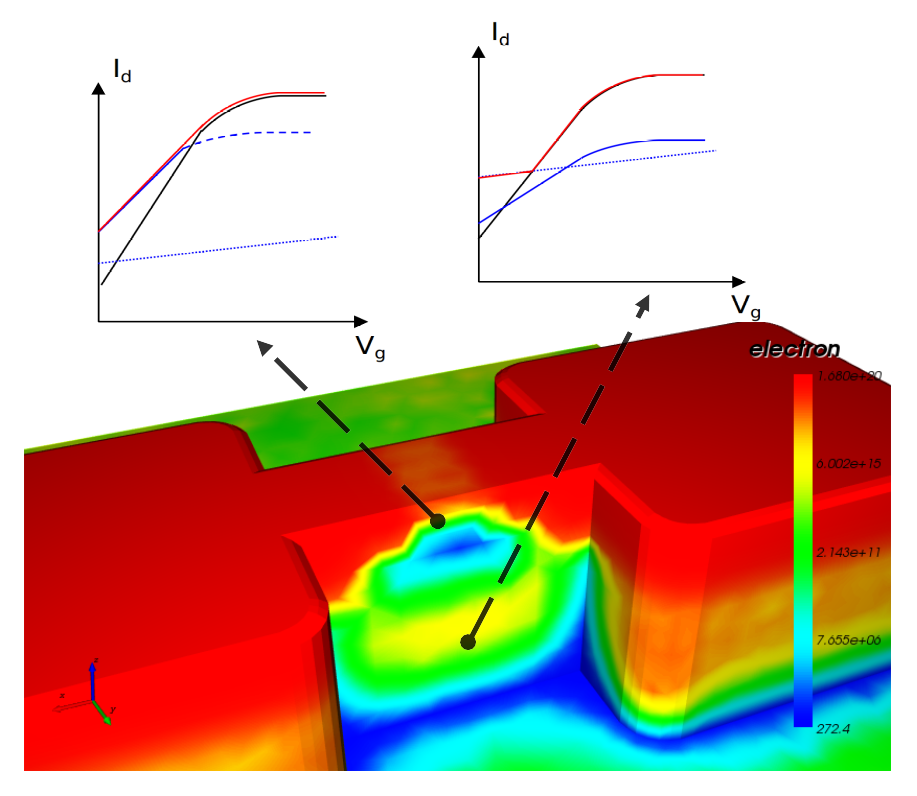Total Ionizing Dose Effect
Total Ionizing Dose (TID) effect is one of the prominent effects in irradiated semiconductor devices. When a semiconductor device is exposed to ionizing radiation for a certain amount of time (thus there is a certain amount of cumulative ionizing dose inside the device), leakage currents of the transistors may increase, threshold voltages may shift, and sub-threshold slopes may change. When the dose is high enough, the device might fail to work.
Methodology
As shown in figure below, the simulation of TID effect in our solution can be divided into 2 steps:

- From "dose distribution" to "trapped charge distribution", it's the problem of describing the behavior of electron, hole, H$^+$ ion and H$_2$ molecular (and maybe some other mobile species) inside insulators and its interfaces with semiconductors, including generation, drift, diffusion, trap-detrap, etc., usually in a very long period of time (days, months, even years).
- From "trapped charge distribution" to "leakage current increase", it's the problem of charge carriers drift and diffusion in semiconductors under certain electric fields. This is a typical feature of modern 3D TCAD device simulator.
Typical applications: - Calculates oxide charge and interface charge density - Analyzing the dependence on total dose, E-field and annealing - Enhanced Low-Dose-Rate Sensitivity (ELDRS)
Example
Figure below gives the simulation result of a 65nm nMOSFET having received 500kRad ionizing dose, pseudo colors representing electron densities in silicon. As the two black dashed-line arrows show, there are two leaking channels caused by the accumulated positive charge in the STI oxide. (Oxides are not shown in the figure.) Respectively, these two channels would causes threshold-voltage-shift and dark-current-leakage. From another point of view, two parasitic transistors are formed by the TID effect.

Hardening by Design
With sophisticated simulations of TID effects, one may have deep understandings of the mechanism, for example, its dependence on the shape of the gate. Thus one may figure out several new designs to mitigate TID effect. And once again, simulation can be employed to check or verify these designs.
SPICE Model
Based on the 2-step simulation mentioned above, one can have a clear knowledge of the mechanism of TID effect. Thus reasonable SPICE models for TID can be established.
On-Orbit Dose Prediction
After working on a certain space orbit for a certain amount of time, the total dose versus shield depth can be obtained by tools like CRad. Thus one may predict the lifetime of the devices.
 Domestic EDA technology pioneer | PFTN semiconductor
Domestic EDA technology pioneer | PFTN semiconductor

